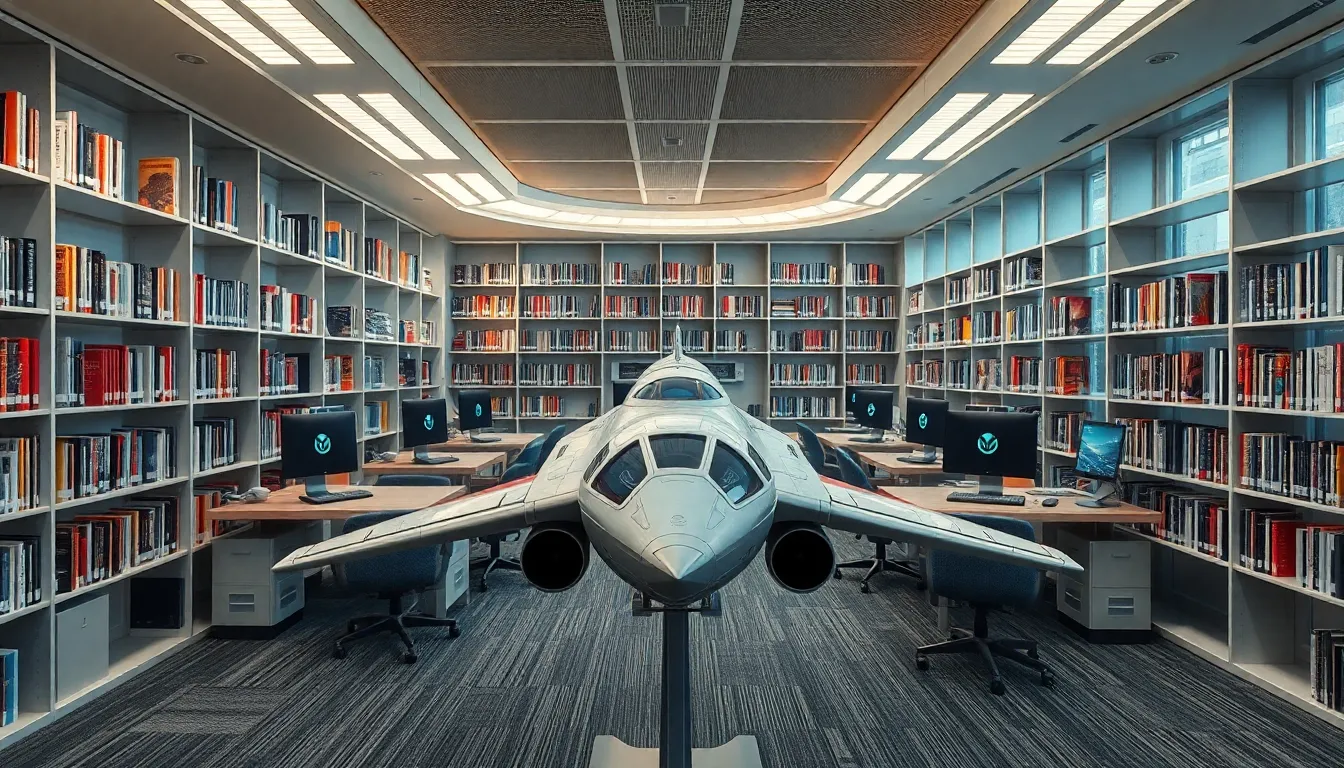In a universe filled with endless possibilities, the concept of a space technology library might sound like something out of a sci-fi movie. But it’s very real and it’s changing the way we explore the cosmos. Imagine a treasure trove of knowledge where rocket science meets the latest in satellite innovation, all neatly organized for curious minds and budding astronauts alike.
Table of Contents
ToggleOverview of Space Technology Libraries
Space technology libraries serve as essential hubs for knowledge related to rocket science and satellite innovation. These resources support a wide range of individuals passionate about space exploration, encompassing students, researchers, and aspiring astronauts.
Definition and Purpose
A space technology library consists of collections of information focused on various aspects of space science and engineering. Its primary purpose lies in providing researchers and enthusiasts with access to vital resources. Users can explore extensive databases that include journals, technical reports, and educational materials. Additionally, these libraries often host workshops or seminars intended to foster learning among different audiences. Knowledge dissemination about the latest advancements in space technology remains a key goal.
Historical Development
The concept of space technology libraries evolved significantly since the mid-20th century. Early collections focused on rocket development and satellite communications. As space agencies expanded their programs, libraries began incorporating more diverse materials, including datasets and simulation tools. By the 1980s, many universities established dedicated space technology research divisions. However, the advent of the internet transformed access to space-related information, increasing collaboration among global scholars. These developments ensure continuous growth and adaptation of resources tailored to various technological advancements in space exploration.
Key Components of Space Technology Libraries

Space technology libraries comprise essential resources for advancing knowledge in space exploration. These resources include both digital and physical collections, catering to varied research needs.
Digital Resources
Digital resources represent a significant portion of space technology libraries. They provide access to online journals, databases, and technical reports that cover a wide range of space science topics. Researchers can find datasets relevant to satellite operations and rocket technology. Audio-visual materials, like webinars and recorded lectures, enhance learning experiences. Furthermore, interactive tools and software simulations allow users to engage with complex concepts effectively. Libraries regularly update these digital assets to reflect the latest advancements in the field.
Physical Collections
Physical collections play a crucial role in the richness of space technology libraries. Printed books, manuals, and archival documents contain valuable historical information on space exploration. Users often access technical reports and government publications covering various missions and projects. Specialized reference materials, like encyclopedias and dictionaries on aerospace engineering, support both novices and experts. This tangible collection provides an alternative for individuals who prefer reading in print rather than digitally. Additionally, libraries may offer artifacts or models that represent significant achievements in space technology, enhancing the learning experience.
Notable Space Technology Libraries
Numerous space technology libraries serve as invaluable resources for individuals engaged in space exploration and research. Among these, two significant libraries stand out.
NASA Technical Reports Server
The NASA Technical Reports Server (NTRS) provides access to a vast range of documents on aerospace research. Users can explore thousands of technical reports, conference papers, and journal articles that detail cutting-edge NASA projects. Researchers and students benefit from diverse topics, including flight technology, space science, and aeronautics. The NTRS, constantly updated, ensures that vital information remains accessible to scholars and enthusiasts alike, supporting advancements in understanding space technology.
European Space Agency Library
The European Space Agency Library (ESA Library) functions as a critical resource for European space research. With a comprehensive collection of documents, it covers various subjects such as satellite technology, Earth observation, and space missions. The ESA Library supports educational initiatives, offering access to technical papers and publications that facilitate research and advancement in the field. By fostering collaboration among European nations, the library plays an essential role in promoting shared knowledge and expertise in space exploration.
Accessing Space Technology Libraries
Accessing space technology libraries involves understanding membership options and navigating available resources. These libraries cater to a wide audience, each with unique needs and access levels.
Membership and Accessibility
Membership typically varies by institution. Some libraries offer open access for the general public, allowing anyone to explore selected resources. Others require specific affiliations, such as being a student or researcher at a connected institution. Fees may apply for premium content or specific services. Users often benefit from extended borrowing privileges and access to exclusive databases, enhancing their research capabilities. Additionally, many libraries implement user-friendly interfaces to simplify navigation for all visitors.
Online vs. Offline Resources
Both online and offline resources play crucial roles. Digital collections provide immediate access to a range of materials, including online journals, databases, and technical reports. Users can explore topics related to space science anytime and from anywhere. Offline resources, however, include printed books, manuals, and archival documents. These physical materials offer a tactile learning experience and preserve historical information on space technology. Balancing digital and physical access ensures comprehensive resource availability for users interested in space exploration.
Space technology libraries are vital for anyone interested in the cosmos. They provide comprehensive resources that cater to a diverse audience, from students to seasoned researchers. By combining digital and physical collections, these libraries enhance the learning experience and foster collaboration across the globe.
As space exploration continues to evolve, the role of these libraries becomes even more crucial. They not only preserve historical knowledge but also offer current insights into cutting-edge technologies. With the right access, users can unlock a wealth of information that fuels curiosity and innovation in the field of space science.





